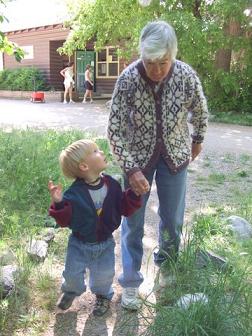
Cover Courtesy
University of Arizona Press
Holly: Hi, I’m Holly Strand from Stokes Nature Center in beautiful Logan Canyon.
Utah nature has influenced a number of eminent nature writers, Edward Abbey among them. A novelist, essayist, and poet, he especially loved the desert southwest– the slickrock desert of southeastern Utah had a special place in his heart. He once declared: “Within this underslung lopsided rump-sprung dough-bellied highly irregular parallelogram lies the least inhabited, least inhibited, least developed, least improved, least civilized, least governed, least priest-ridden, most arid, most hostile, most lonesome, most grim bleak barren desolate and savage quarter of the state of Utah—the best by far. “
Undeniably one of our best western writers. Abbey has been called a “national treasure,” and Thoreau of the American West. He has also been called an arrogant self-centered bigot, a militant conservationist, and America’s crankiest citizen. He was full of contradictions about his own beliefs about nature and society. He could run on and on about the “hooved locust,” his name for cows, grazing everywhere on public land. Then he would order a steak from a restaurant a few hours later.
Born in 1927 in Pennsylvania, Abbey came west to study at the University of New Mexico. He moved to Utah in 1956 to take a job as a ranger in Arches National Monument. During his time in Arches, he created a multi-volume journal of his experiences. He later collapsed the journal material from three seasons into one season to produce one of the bestselling books on nature ever written, Desert Solitaire.
The very first Earth Day, April 22nd 1970 drew millions of people to numerous locations around the country. Abbey was invited to speak in Logan by organizers Thomas Lyons and Ingrid Eisenstadt. He accepted and was favorably impressed by the area and its people. When the University of Utah offered him a post as the first Writer in Residence, he accepted, spending much of his time with Ingrid in Logan in a little house on 6th East.
Abbey didn’t stay in Utah for long. He was a restless man, roving around in search of wilderness or adventure and in pursuit of a number of women, 5 of which became wives at different times of his life.
Eventually, Tucson became his main residence. But he still made many trips to Utah, spending time here and there visiting friends and wild places.
Abbey died in 1989, perhaps in part a victim of his own hard living. As he requested, he was placed in an old sleeping bag and buried beneath a pile of rocks to keep the coyotes away with “No comment” engraved on his gravestone. A wake was held in Saguaro National Monument and then in Moab where 600 of his friends celebrated his life and writing.
Information for this program was gathered from Edward Abbey : A Life by James Calahan. Thanks to the Rocky Mountain Power Foundation for supporting research and development of this Wild About Utah topic.
For Wild About Utah and Stokes Nature Center, I’m Holly Strand.
Credits:
Text: Holly Strand, Stokes Nature Center
Sources & Additional Reading
Abbey, Edward. 1990. Desert Solitaire. Touchstone; Reprint edition https://www.amazon.com/Desert-Solitaire-Edward-Abbey/dp/0671695886
Calahan, M. James. 2001. Edward Abbey : A Life. University of Arizona Press https://www.amazon.com/Edward-Abbey-James-M-Cahalan/dp/0816522677


